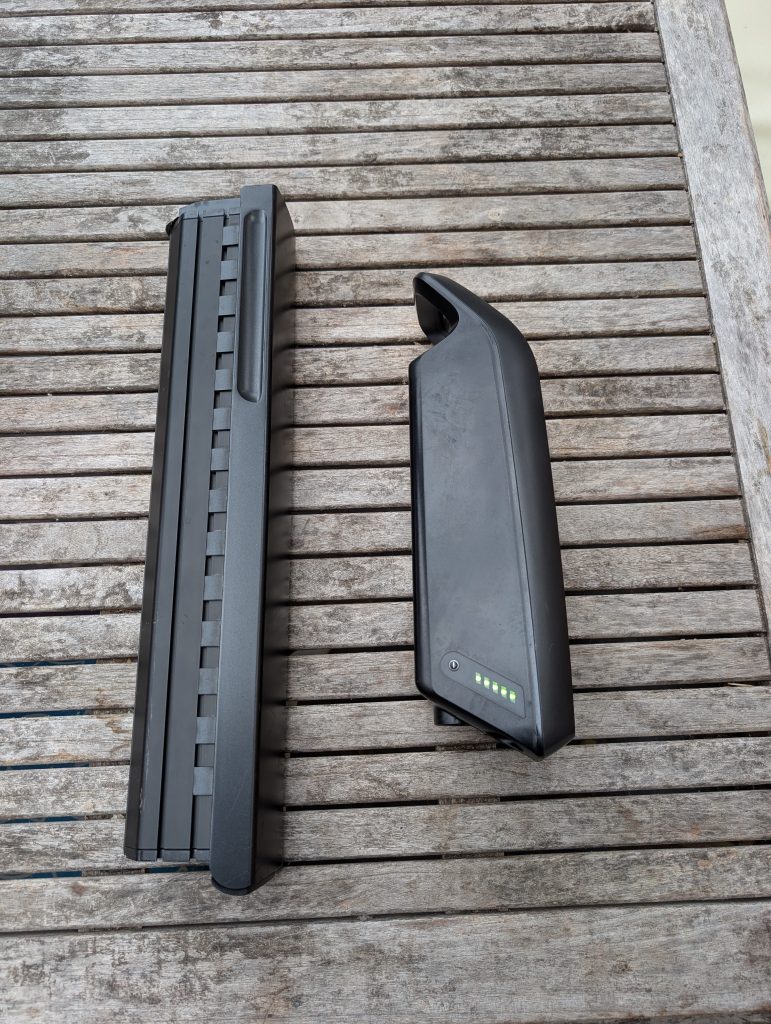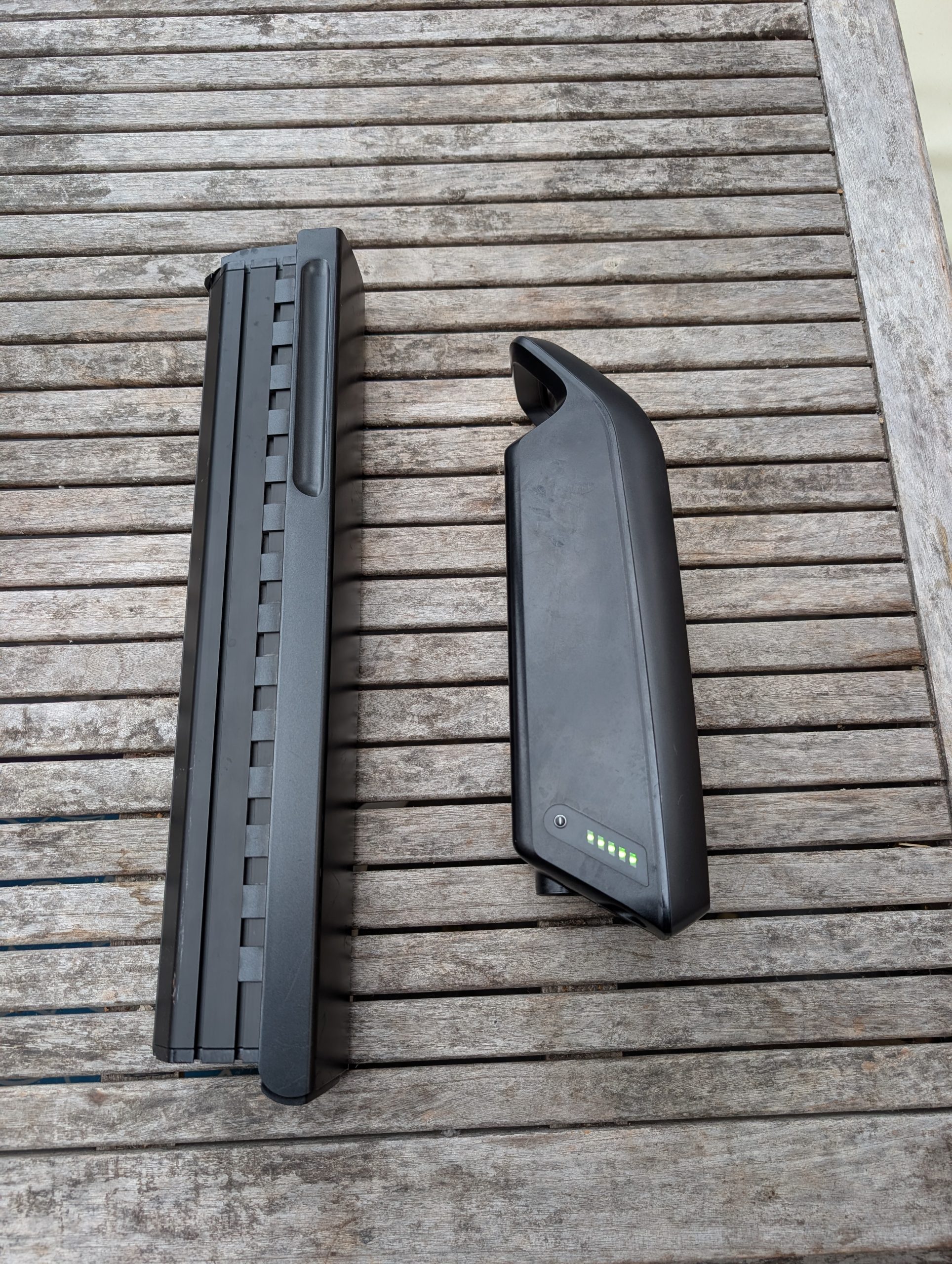
Good quality Lithium batteries, along with their correct chargers are very safe and should be long lasting, we have (Bosch) ones 8 years/8000 odd miles old and still giving good service, albeit with about a third drop in range by now.
Charging is straightforward, just like your phone. Batteries are either removable (so can be charged on or off the bike) or sealed in the bike.
Just be aware that if you have the latter, you need to be able to get the entire bike close enough to the mains socket to be able to plug the charger in, which is fine if you have a suitable parking spot, not so much if your accommodation, at home or on tour, makes that difficult or impossible…
Lithium batteries are temperature sensitive.
High and low temperatures affect range performance and shorten battery life.
Never store the battery outside where it will be exposed to temperatures below 0ºC for more than a few hours. (Something to bear in mind if your bike lives in a cold garage, shed or is parked out overnight.) and also avoid parking the battery under direct sunlight for long in the summer.
They charge best at room temperature, but if you do bring it in from the cold to charge it, let it warm gently up to room temperature for a while before charging to avoid condensation and let the lithium become mobile.
Also avoid charging the battery immediately after hard riding, let the battery cool down for a while before charging, as charging a heated battery will accelerate cell degradation and shorten its service life.
The current (!) super safe type advice is to keep the battery under supervision whilst charging, and store it/the bike in a place with a smoke detector, so you get early warning if a battery has developed a fault and is overheating.
Recent reports about lithium batteries catching fire are due to an uplift in the number of occasional lithium battery fires in e-scooters or cheaply/poorly converted bikes and mismatched chargers (but not for good quality e-bikes).
On investigation these have invariably proven to be the result of faulty or damaged battery cells/battery construction, and/or incorrect charger use/charging procedure.
If it does catch fire, the advice is basically to run away from the intense heat and lethal fumes, dialling 999!
The time taken to charge varies, depending on the power (number of Amps) of the charger and the size of the battery, and ranges from 4 – 8 hrs for a full charge. The good news is these batteries take charge fastest when low, and charge quickly to 80%, before slowing right down on the way to 100% to protect the cells, so they quickly charge to 50-80% if you need a top up from low on a quick turn round or a cafe top up stop.
Unlike older battery types, Lithium batteries have no ‘memory effect’ and can be part charged for any period of time as often as you like without reducing the battery’s overall life, making it easy to keep it around 80% full.
For a happy long lived battery, the ideal is to try as much as possible to maintain the level of charge between 20% minimum – 80% maximum of the battery’s overall capacity.
One study suggests that choosing to limit regular charging to 80% max can double the life of your battery, so avoid the old advice about ‘topping up’ a battery to 100% after every short ride, just do a 100% charge when you are about to need a full battery for a big ride.
(For the many batteries that have 5 lights showing the state of charge, this conveniently means putting it on charge when you get down into the second from the bottom light, and then unplugging it from the charger once the 5th or top one has started flashing.)
If you do end up flattening the battery, get some charge into it asap to avoid longer term damage.
If you are charging to 100%, note that Lithium batteries don’t like to be left sat on charge when full, so it’s advisable (and safer) to not leave it on charge overnight.
Note too that the range capability of Lithium batteries drops by up to 25% or more when cycling in lower temperatures.
If yours is going to be out of use for more than a week or two the advice is to store it somewhere coolish at around 1/2 charge (say 3 out of the 5 lights on the battery lit) and top it up just a little every few weeks to maintain this level of charge.
Finally, should you ever need one, only purchase a genuine (ie expensive) replacement charger or battery, made by or recommended by the manufacturer.
Want to charge using 100% Green electricity?
If you own or are thinking of buying an e-bike you might also be thinking about minimising your carbon footprint.
If so, check out the renewableenergyhub for genuinely green suppliers that do not use carbon credits to ‘greenwash’ their power, and who actually invest in green energy production, eg: goodenergy ecotricity or greenenergy .
If you have solar panels, simply plug your charger in while the sun’s shining! You could use a smart plug Timer to optimise your charging schedule.
